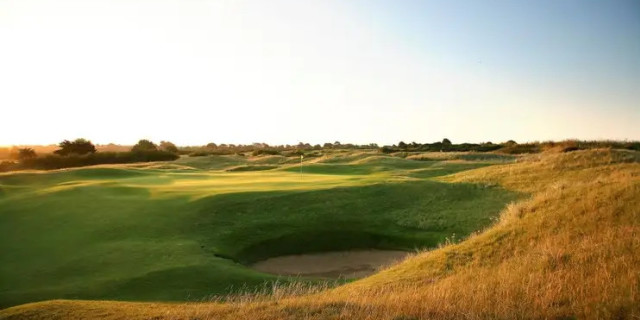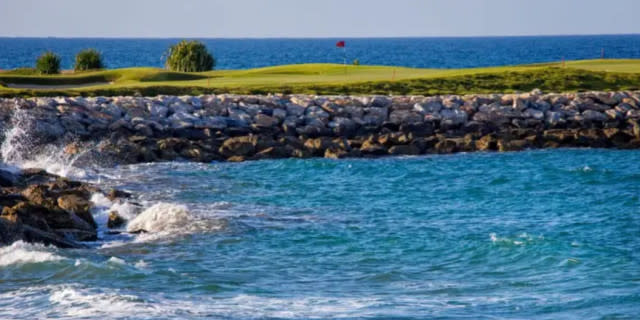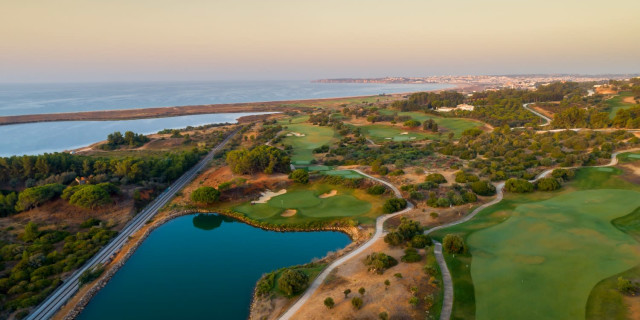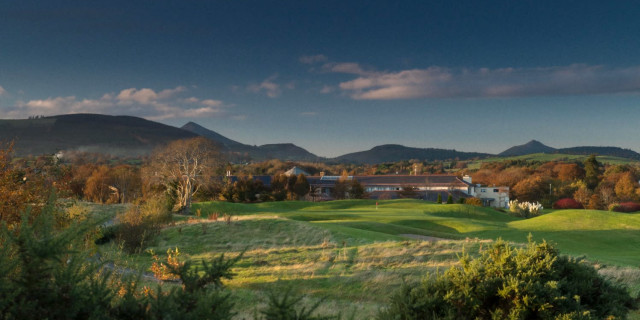
Prince's Golf Club Feature Review
Review & Article by Golfshake Ambassador Andrew Picken
Former European Tour Order of Merit winner, Ronan Rafferty said: “Princes is one of our national treasures and its restoration is good news for all of us who cherish links golf.” I could not agree more with his sentiments.
I consider myself extremely blessed to be given the chance to sample this wonderful facility. I knew before the visit of the 100% recommended rating awarded to Prince's Golf Club by Golfshake subscribers, but I was guilty of some misconceptions about the club. I knew it was close geographically to Royal St George's and that they will be used for Open Championship Qualifying in 2020. It wasn’t until I visited and fell in love with the place that I fully appreciated its appeal and quality.
It oozes tradition and heritage as you would expect from a past Open venue, where Gene Sarazen won the Claret Jug in 1932, but has pulled off brilliantly the idea of having a modern, comfortable, state of the art facility that still retains all that is best from the past.
As my regular readers know, I love the history of the game and it has been preserved brilliantly at Prince's. They even incorporate historical references as part of the new course design on the Himalayas.
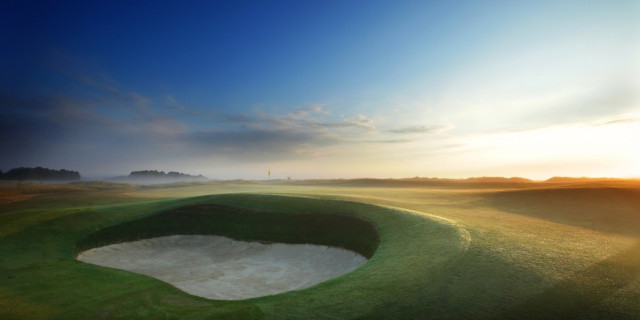
For no other reason than I have loved writing it, I have included a section extensively detailing the history of the club obtained from a number of sources but in particular a book called “A Celebration of 100 Years, Prince's Golf Club”. It has been ably supported by an excellent publication by David L Dobby called “Golf on the Kent Coast.” I have also been aided and abetted by the current guardian of the facility Rob McGuirk who is also a scholar of the history of the game.
But firstly, let's talk about the course and facilities, starting with the nine holes branded as the Dunes.
THE DUNES
9 Holes | Par 36 | 3432 Yards
The Dunes forms an anticlockwise loop of nine holes five out in a southerly direction to the boundary with Royal St. George's and four back.
The dog-leg 1st hole is arguably the most difficult on the course with a narrow green, tricky to hold even with the shortest of approach shots. The ideal line off the tee is just left of the trio of bunkers that loom large as you contemplate your shot. The green is shaped like an upturned saucer with run offs on each side. The green is fair if found but difficult to stop and hold if not played with real accuracy. This is a fabulous opening hole.
Moving onto the par three 2nd, which A small elevated green that slopes left to right, capably protected by three substantial deep bunkers. This is a visually intimidating short hole and played into wind would be a real terror. Thankfully our review day was blessed with calm weather.
This only temporary respite before three very testing holes, particularly the 4th and 5th, which are both challenging par fours.

The 4th is a great golf hole. A straight drive down the middle is required avoid the bunkers to the right. The approach was semi blind from an uneven lie. I followed the guidance of the shot saver and took and extra club and it proved to be excellent advice resulting in a birdie that will live with me for a long time.
Dog-legging right to left, the 5th fairway has folds and ruffles that are superb following the natural contour of the land. Bunkers are positioned in all the relevant positions for Tigers and Rabbit alike. The ditch to the right of the tee box is small but provides a real focus for avoidance off the tee. Please don’t let this draw you into a pulled shot left as bunkers await exactly such a shot.
The 6th tee affords fine views across both golf courses and is the start of the excellent par five with hazards both left and right of the green for those choosing to go for the green after a good drive. Aim for the middle bunkers off the tee. The green is large measuring some 43 yards so club selection is difficult.
A lengthy par three, the 8th calls for a long and accurate tee shot. Favour the right side of the green for the approach shot as the bunker guarding the left portion of the green is deep and inviting with a high exit lip.
Finally, the 9th tee shot should ideally fly towards the second bunker on the right visible form the tee as this will give the best angle into the green. Two good shots are required to find the final green. The green falls away from the approaching player so care will be needed with an approach shot. This green was brought into play in 1985 when the central Clubhouse was built, the original green now being one of the practice greens.
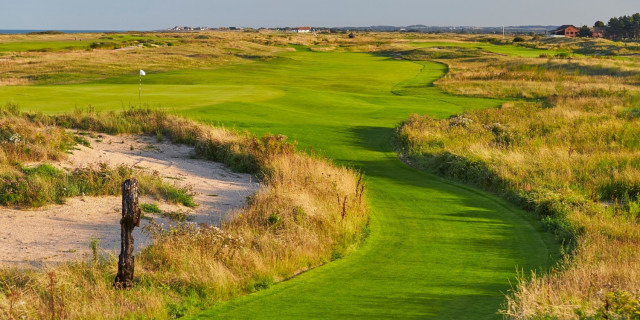
THE REIMAGINED HIMALAYAS NINE BY MARTIN EBERT
9 Holes | Par 36 | 3201 Yards
This group of nine holes has undergone a major upgrade. Renowned architects Mackenzie & Ebert have reimagined the Himalayas Course. Martin Ebert is rightly justified in having his signature on this loop of nine recognised. I think it is tremendous and a highly enjoyable yet testing layout.
These changes are most visible on the 2nd hole, which has been combined with 3rd to produce a sweeping par five around wetlands to the old par three green.
Previously a short par four, the 3rd saw the addition of three new bunkers down the left-hand side and the ditch on the right-hand side has been enlarged into a wetland.
However, the jewel in the crown is the new par three 'Bloody Point' located at the far end of the course, this short hole, set against the backdrop of the sea requires an accurate tee shot to the raised green.
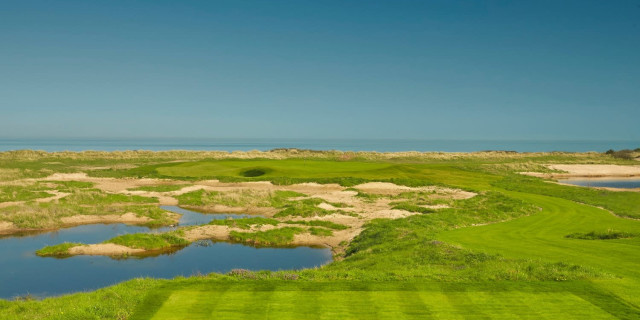
The walk from the 5th green to the 6th tee alongside the beach, gives the golfer a little respite before taking on the mammoth par five.
Measuring 608 yards from the Championship tee, the 6th and is rightly stroke index 1 when played as the second nine on the card. This is a genuine par five for all golfers with a new marshland water feature. The water feature protects the fairway to the right and bunkers patrol to the left, so an accurate tee shot is very important to play this hole successfully. The green has two different levels adding further to its trials and tribulations.
The 4th and 8th share of one of the few championship double greens outside the Old Course at St. Andrews. The views from this spot are simply stunning.
The tee of the par three 7th affords a spectacular view across Pegwell Bay. It measures 197 yards. From elevated tee to elevated un-bunkered green, into the prevailing south westerly wind the tee shot can require a driver if the wind is strong yet only a short iron with a following north easterly breeze. This is another brilliantly designed hole linking golf to nature and providing a visually intimidating challenge off the tee.
Moving onto the 8th, which is a risk or reward gem that has been completely reimagined. The green is shared with the 4th in the manner of St Andrews and is simply beautiful but challenging. I aimed for the lone pine tree in the distance as I was not confident of reaching the green with a drive and was happy with a hard-earned bogey as my approach to the green was poor.
Also, many thanks to Prince's for allowing us to use the Prostate Cancer UK flag on the 8th green to reinforce the message that 1 in 8 men in the UK will be affected by Prostate Cancer.

The closing tee shot from the highest tee on the course is similarly affected by the wind and the green, positioned almost underneath the Clubhouse balcony is protected by the Sarazen bunker that collects any overdrawn shot. This is a brilliant golf hole. The aiming point is to the left of the right-hand fairway bunker. The green is long and narrow and any approach shot should try and avoid the Sarazen bunker and its plaque. The depth of it and the watching gallery from the nearby clubhouse balcony would make any sand save attempt highly pressured.
The opportunity to stay and play at this venue using the Lodges is definitely something that should be included in any serious golfers list of venues to visit.
It is top class yet friendly and welcoming.
I would sum up the Princes experience as Stunningly Contemporary, Beautifully Traditional.
Make the effort to visit I guarantee you will not be disappointed.
100% of your fellow Golfshake subscribers agree with my assessment.

History
This facility has a rich and venerable history as would be expected from a course originated by a Prince. That’s a family called Prince, although there are many royal connections as the club developed. The brothers George and James had a chequered past with convictions for fraud and embezzlement, they helped form sporting clubs based in Knightsbridge in London. One these later evolved into Queens Club, the famous tennis venue.
Princes Mitcham was made up of the elite of London society who travelled to the coast for weekend jaunts and recreation. Harry Malaby-Deeley (later Sir) negotiated a 40-year lease for course, clubhouse and hotel. He was determined that the course would be built to counteract the new Haskell ball and would also be able to accommodate families which was in direct contrast to its near neighbours Royal Cinque Ports and Royal St George's.
The course was designed to represent a test to the “Tiger” golfer but also provide alternative routing for the less capable “Rabbit” golfer.
Sir Guy Campbell noted in an article published in golf Illustrated that: "The terrain over which it is stretched rather than spread, is not as mountainous as most of St George's, not jumbled and short and steep as much as Deal."
Again, illustrating its links to the political class, it was opened by A J Balfour who had previously been Captain of the R&A and Prime Minister from 1902 to 1905.
The course was heavily utilised during the First World War given its strategic defensive position. It was commandeered by the Argyll and Southern Highlanders. It became a training ground with barbed wire and anti-aircraft guns positioned at intervals along the shore line. Older greenkeepers were employed but the horse drawn mowers were hampered by the stray ordinance and shrapnel littering the course. These staff were supported by Lucas family members who used to hand mow the greens, which were protected by wire. The attitude of the Scottish soldiers led to the course being preserved for use after the war. Laddie was given his nickname by the Scots soldiers as he was born in the clubhouse. The Lucas family left a three generational legacy to the club.
Due to the care and skill of the staff the club rose again to enjoy a golden era during the 20s and 30s.
In 1922, Prince's attracted Open Qualifying and the Ladies Open which was won by Joyce Wethered (later Lady Heathcoat- Amory). Royal patronage followed with HRH the Prince of Wales becoming club president in 1931. Bobby Jones was quoted as saying of Joyce: “I have never played golf with anyone, man or woman, amateur or professional, who made me feel so utterly outclassed.” Praise indeed.
From 6th to 10th June 1932, The Open was played at Prince's being won by Gene Sarazen. He won by five clear shots and received a sum of £100 for his first prize from a prize fund of £500.
Gene Sarazen is credited with the invention of the sand wedge and his achievements are recorded in the bunker given his name on the 9th hole of the Himalayas. His first sand wedge used in The Open was later given to the club and forms part of an incredible museum of golfing history lovingly preserved at this venue.
His idea, produced by Wilson, was formed after receiving flying lessons from Howard Hughes and a recognition of the aerodynamic principles of airplane construction. The flange of the club, giving bounce through the sand, replicating that of an aircraft wing.

World War Two
Percy “Laddie” Lucas DSO DFC CBE; became a sportswriter for the Daily Express having been educated at Cambridge. He was a golfer of such quality that he played all four rounds of The Open at Muirfield and also played Walker Cup becoming Captain for the event played at Winged Foot in 1949.
Laddie was a Squadron Leader during World War Two being awarded the Distinguished Flying Cross for his exploits.
One of his missions is commemorated on the course of today. His spitfire was badly damaged and suffered engine failure. He glided the plane from Northern France recognising his beloved Prince's and using the clubhouse and fairways as a marker he crash landed short of the river Stour. Emerging unhurt from the wreckage he remarked that the greens were in an awful state.
The Wiltshire Regiment had commandeered the course for WW2 and had no interest in golf and as such obliterated it, using the greens for target practice. Lord Brabazon remarked: “It’s like throwing darts at a Rembrandt.”
His close friend from childhood and university, Henry Longhurst, on hearing of his crash-landing exploits sent a telegram that read: ”Driven out of bounds again Lucas.” This beautiful tribute to Lucas and his comrades has been built as a permanent memorial as part of the new design.

Churchill feared that the Pegwell Bay area was ideal for invasion and set pipelines along the foreshore designed to be set alight should an invasion occur. This flaming barrier would be a first line of protection for the mainland.
At the end of hostilities, the course was unrecognisable and had been demolished.
It was de-requitioned in 1949 and Sir Aynsley Bridgland applied his energy, vision and wealth to resurrect the course. He used Sir Guy Campbell and John Morrison to construct the new course. They were able to develop from a blank canvass such was the damage caused by the armed services.
Ramac Holdings purchased the course in 1976 installing automatic watering systems taking the course maintenance to another level. The dunes on which this course is based have been in existence since Elizabethan times and many areas are now protected as areas of Special conservation due to Special Scientific Interest.
I love how the new and pristine clubhouse and facilities still have a real thread and link to past heritage and tradition upon which the club is built.
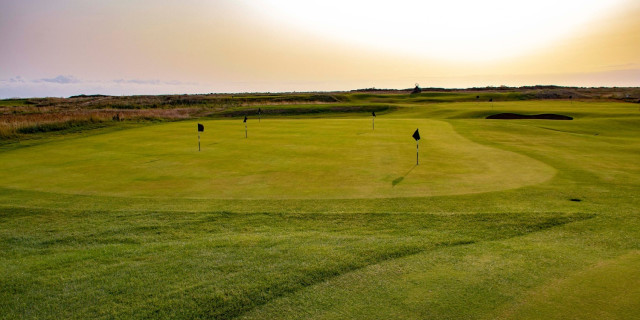
It still has a real ethos of family friendly golf with particular support for Junior golf evidenced today by the active support of junior golf in the form of the Laddie Lucas Spoon, which is one of the most important junior golf events across Europe. Past competitors include Paul Casey and Justin Rose.
Whilst based at Princes, Sir Aynesley Bridgeland formed the Golf Society of Great Britain in 1955 in order to promote amateur golf and amateur championships. The society still provides financial support to junior golf promoting the Laddie Lucas Spoon.
The club continues its original ethos of encouraging and supporting families and junior golf and I think this attitude is to be applauded. The non-gender specific tee boxes that are used are yet another example of the kind of family friendly thinking encouraged at this club. Users are actively encouraged to take well behaved dogs onto the course whilst playing and this also is another great example of the ethos of the club.
The website for the course is superb providing all the information a visiting golfer would require including flyover footage and clearly illustrated course routes.
For more on Prince's Golf Club, visit https://www.princesgolfclub.co.uk/.
About the author

Andrew Picken is a Golfshake ambassador and prolific golf traveller who writes course reviews, travel features, and destination guides. A passionate golfer for over two decades, he plays regularly across the UK and Europe and is involved in several golf societies and charity events. Andrew is committed to promoting the game and showcasing the variety of golfing experiences available to enthusiasts of all abilities.
Related Content: review Princes Golf Club Kent course

